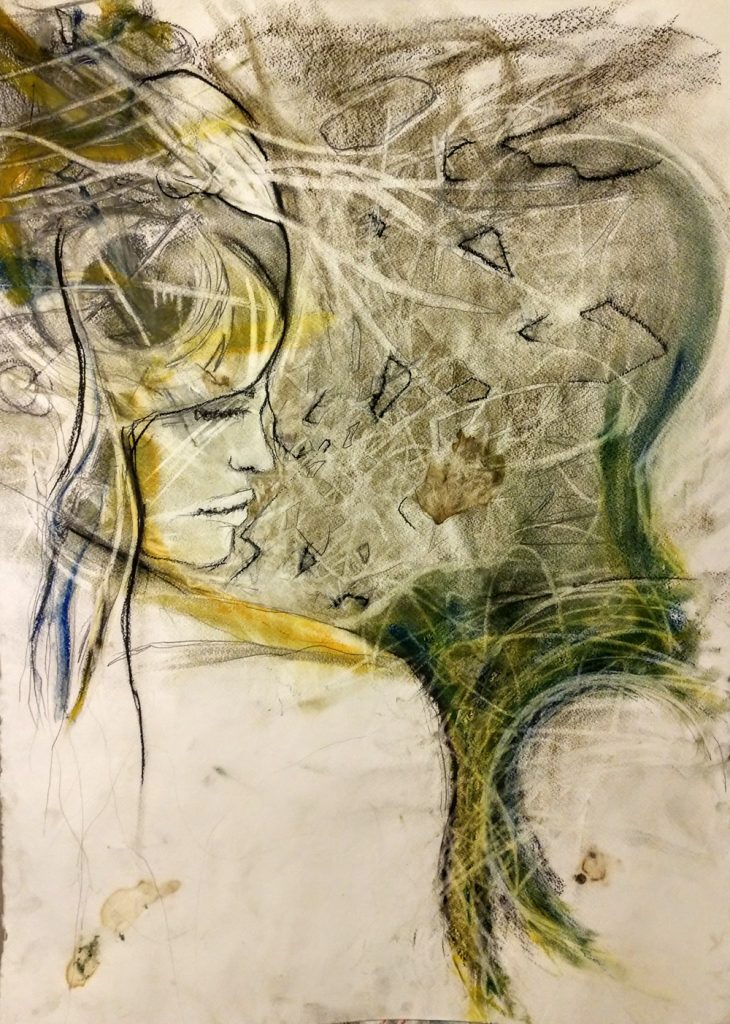November 22, 2018
 Alison Boughn, ATR-BC, LPC, Temporary LMHC, NCC, TF-CBT, works at the Mercy Child Advocacy Center in Sioux City, Iowa, providing art therapy to children and adolescents with posttraumatic stress symptoms. She is additionally pursuing her doctoral degree at the University of South Dakota and teaching coursework in counseling and arts in health as an adjunct instructor at Wayne State College and the University of South Dakota. Living in “a rural community that connects South Dakota, Nebraska, and Iowa,” she has benefitted from her AATA membership through opportunities to connect with her colleagues. Boughn notes, “The communications that I receive from AATA help me to feel as though there is a shared voice and vision that this profession stands for that I am proud to be part of.”
Alison Boughn, ATR-BC, LPC, Temporary LMHC, NCC, TF-CBT, works at the Mercy Child Advocacy Center in Sioux City, Iowa, providing art therapy to children and adolescents with posttraumatic stress symptoms. She is additionally pursuing her doctoral degree at the University of South Dakota and teaching coursework in counseling and arts in health as an adjunct instructor at Wayne State College and the University of South Dakota. Living in “a rural community that connects South Dakota, Nebraska, and Iowa,” she has benefitted from her AATA membership through opportunities to connect with her colleagues. Boughn notes, “The communications that I receive from AATA help me to feel as though there is a shared voice and vision that this profession stands for that I am proud to be part of.”
For Boughn, the highlight of her dual degree program in art therapy and counseling from Emporia State University was co-presenting her Master’s Project, Shots After Work, with her faculty chair Jessica Stallings, ATR-BC, LMHP, CPC, at the AATA’s 2016 Annual Conference in Baltimore, MD. Her project focused on implementing effective art therapy services with Law Enforcement Professionals, and she continues advocacy work to in this area.

“Processing Awareness” by Alison Boughn. Chalk pastel on watercolor paper. October, 2018. View more of Boughn’s work here.
Artist’s statement: “I find that being submersed in the work that I do, I tend to put off my own needs for processing my experiences as an art therapist. Often times I make in session with my clients and give them the art that I have created. The goal in this is to develop a transitional object related to their session progress and the continued therapeutic relationship that exists in session. I have realized, that in this act, I continue to give pieces of myself away and avoid creating from my own experiences instead of from the empathy of someone else’s. This piece is the most recent process piece I have created after a particularly difficult and fulfilling session with a client. My process pieces always begin as a mark that I then continue morph into what it needs to become. In this piece specifically I feel like it’s an illustration of the battle between current self and the development of one’s true authentic self — embracing all the strengths and pieces we wish to forget and avoid to accept who we will become. I do not feel this is a self-portrait but rather the perspective of witnessing a client move through this process. Sometimes I find that being the therapist can be most difficult and rewarding when you’re watching someone put together their own pieces.”
